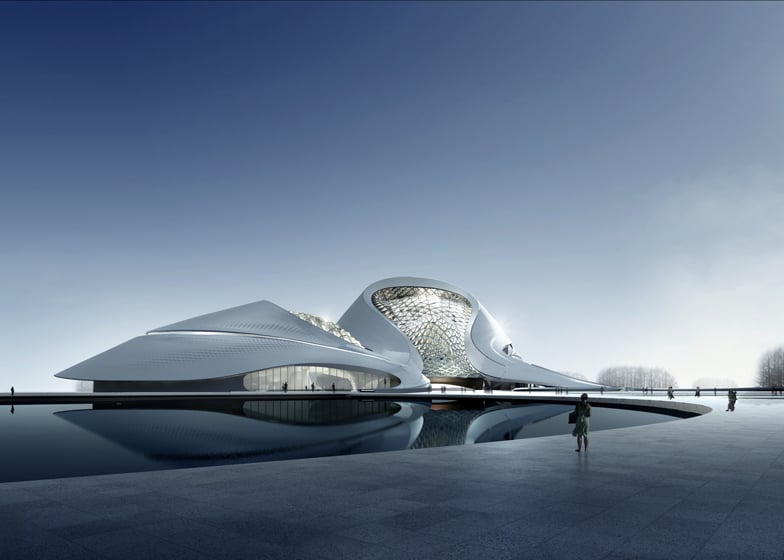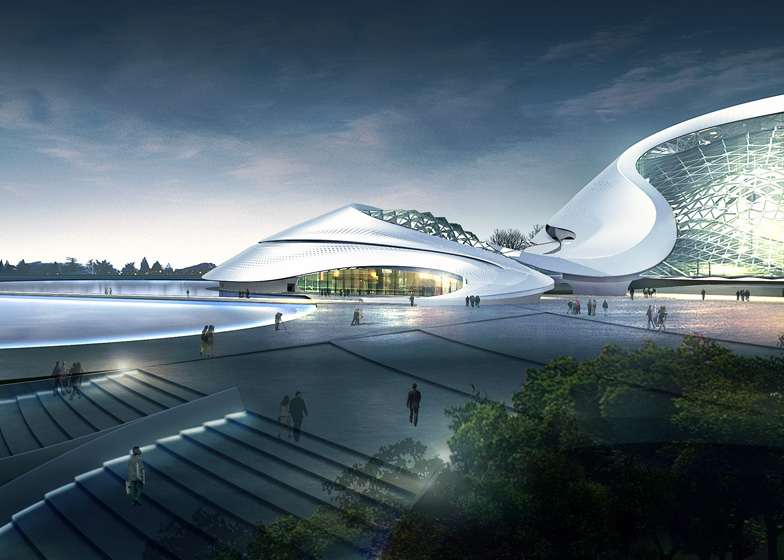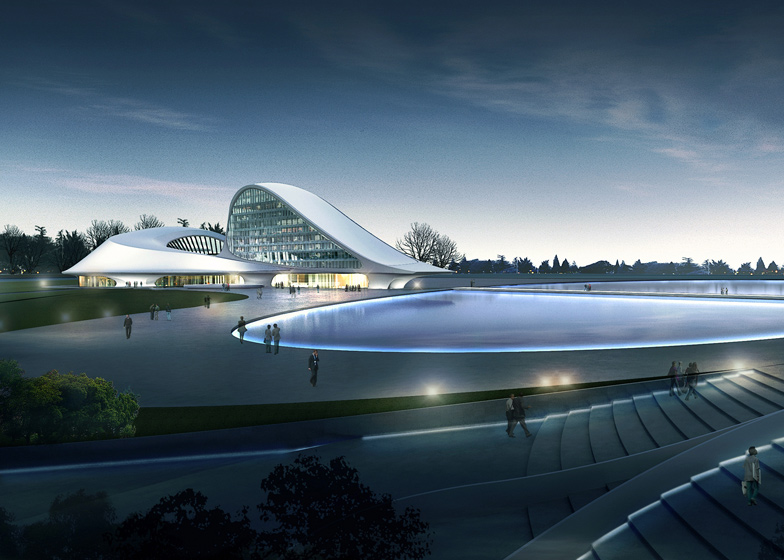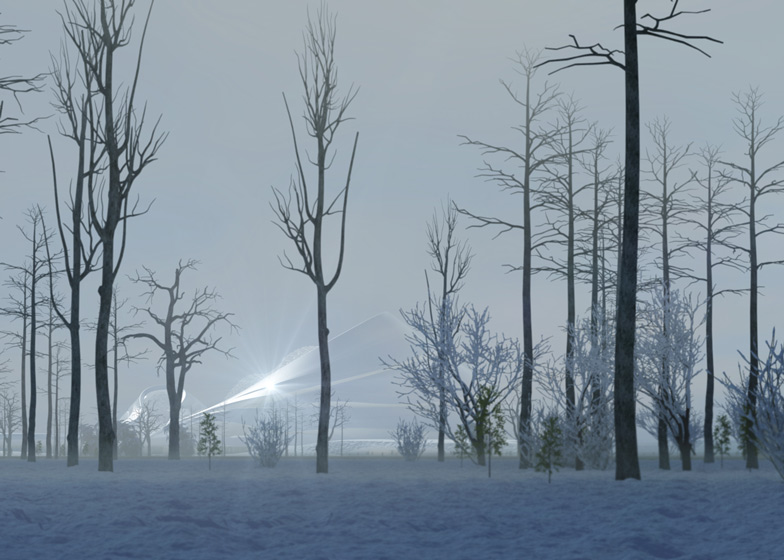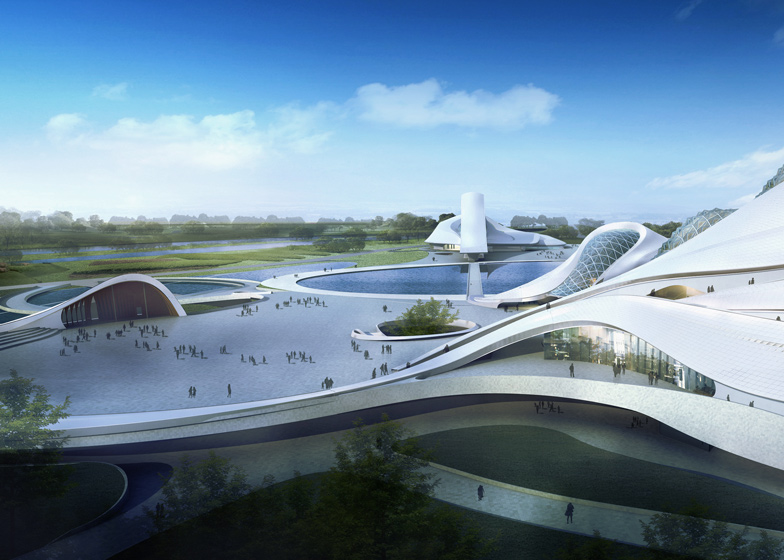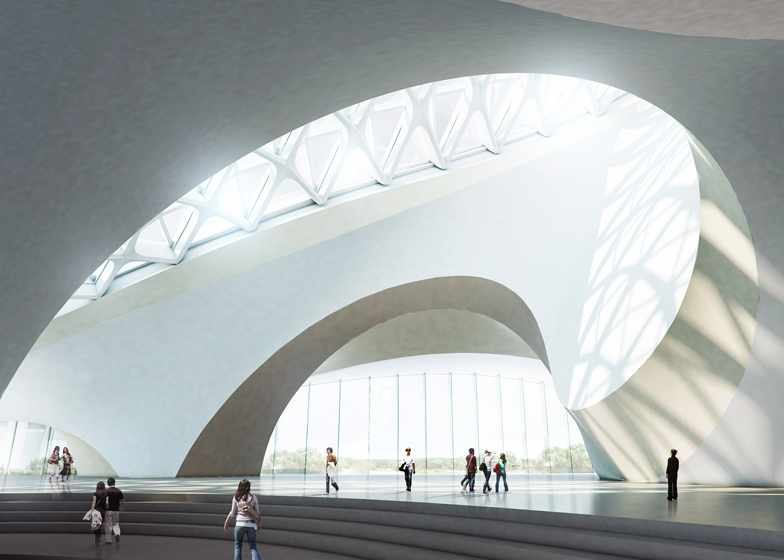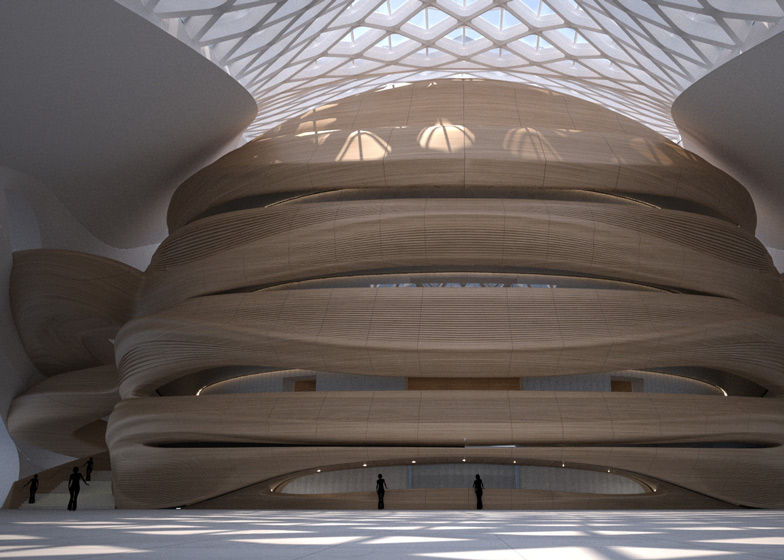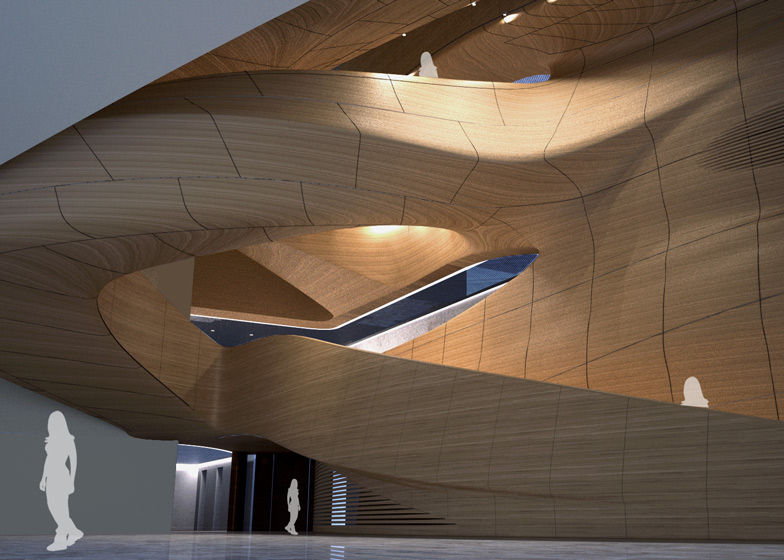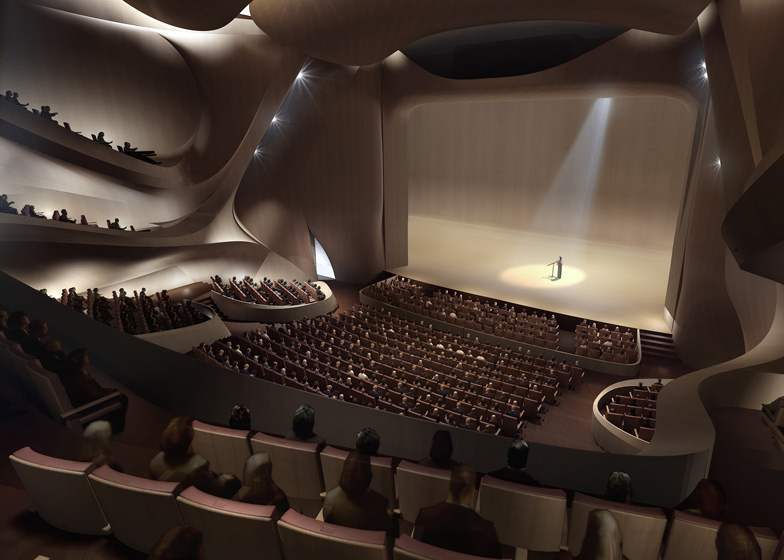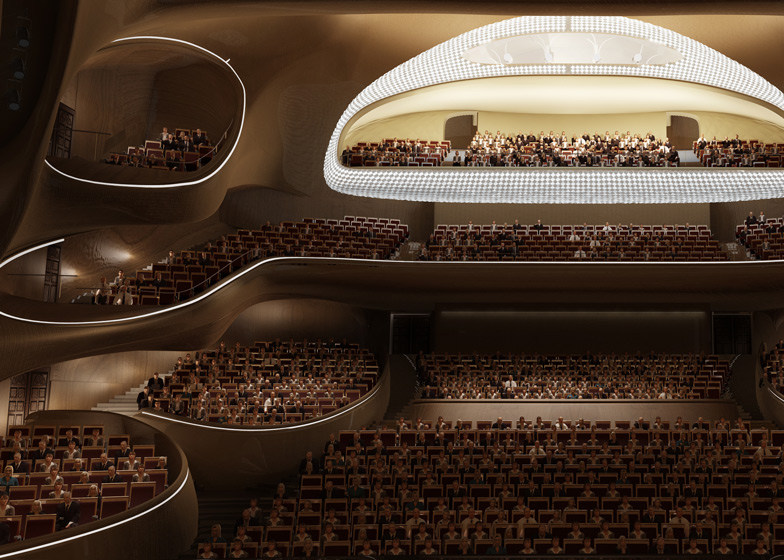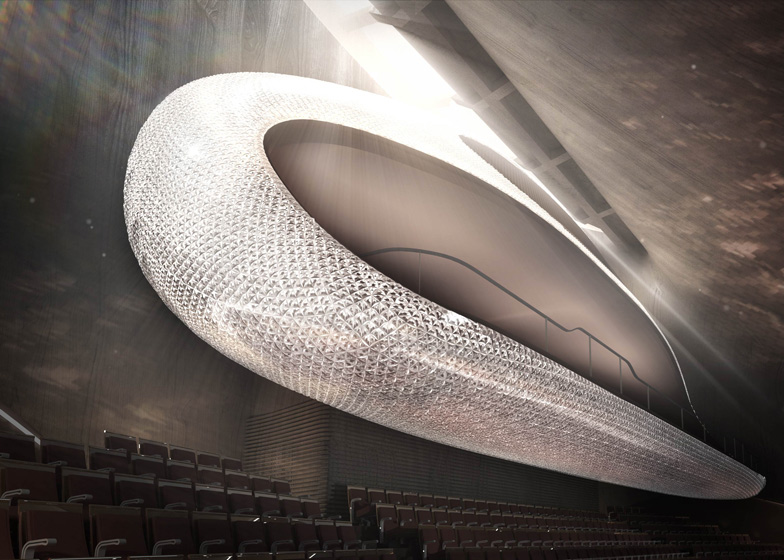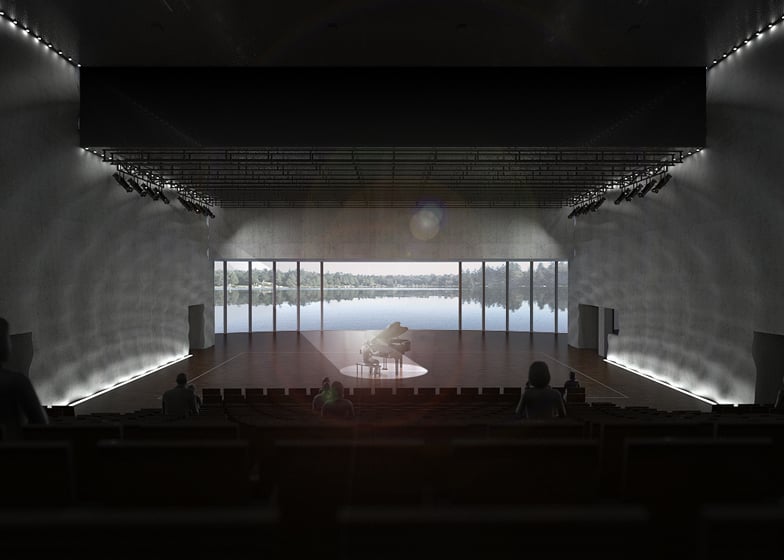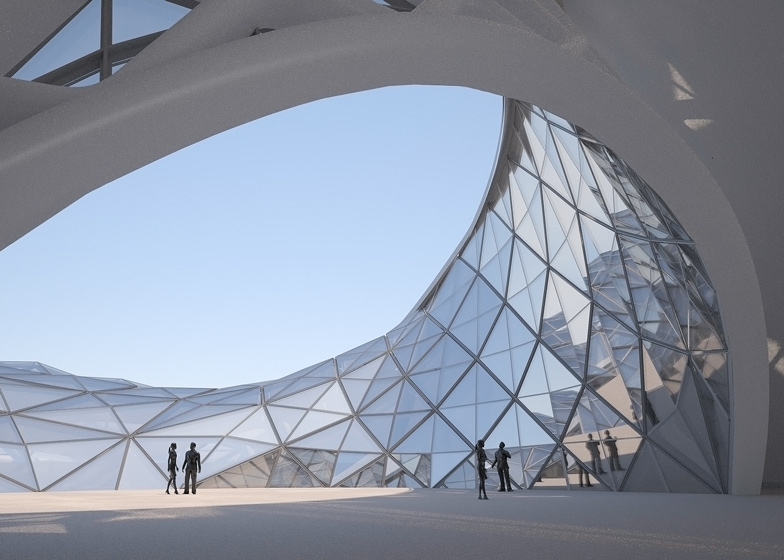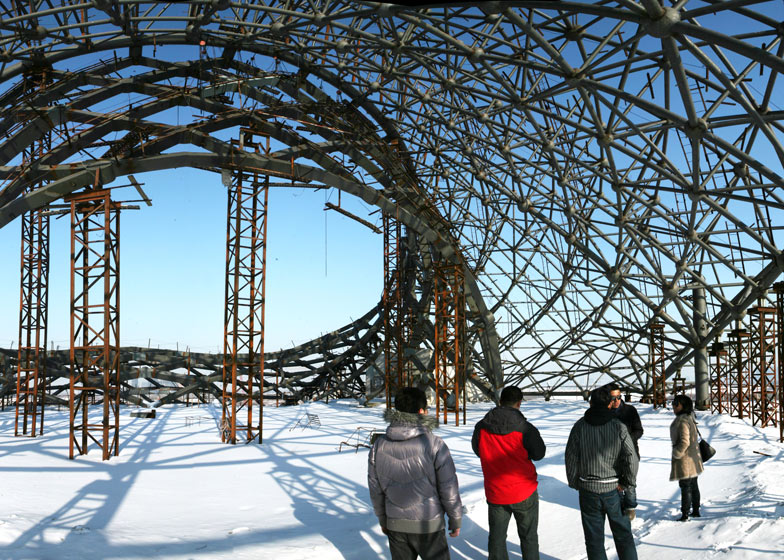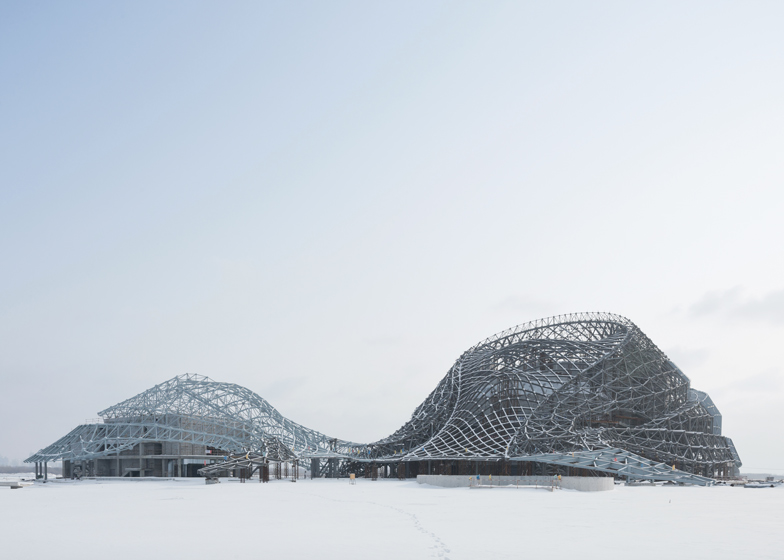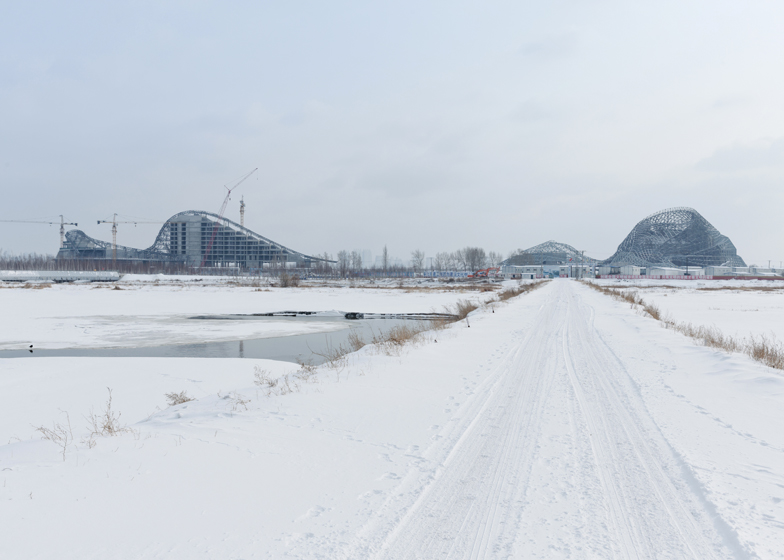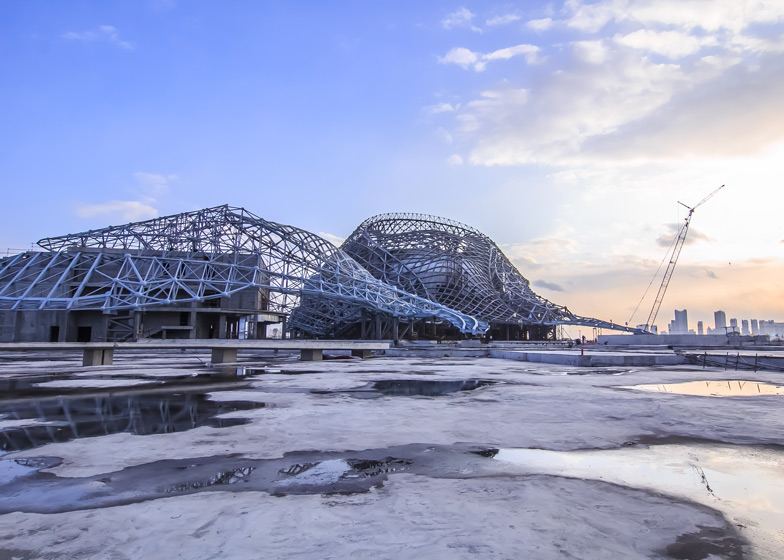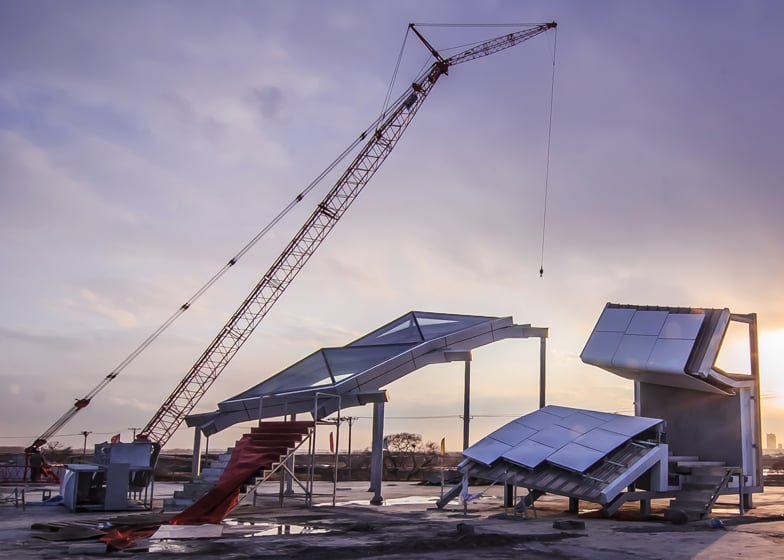Here are some new renders of Beijing studio MAD's Harbin Cultural Centre, which is well under construction (+ slideshow).
MAD designed the undulating arts and culture venue for the city of Harbin, in China's far north-east corner.
Situated on an island surrounded by wetlands of the Songhua River, the meandering site plan echoes the form of the river cutting through the land.
To disguise the centre in the often snowy landscape, the buildings will be predominantly clad in white aluminium and also use white stone and concrete.
The complex is split into two parts, separated by a man-made lake but connected by a long straight bridge.
On one side is the Harbin Grand Theatre, which will contain two different-sized theatres to host performances from large-scale operas to small independent shows.
A ribbon-like structure rises up from the ground to wrap around the back of both theatres, pinching in at the front of each.
This element will continue outward from the larger volume to create landscaping around a plaza.
Glass panels will form the roofs over the foyers, filling the gaps between the ribbon shape.
Inside, the larger theatre will be lined with wood panels to aid acoustics and add warmth to the otherwise white spaces.
The Harbin Labour Recreation Centre will sit on other side of the lake, containing facilities for conferences, cultural education and exhibitions, plus a hotel and catering space.
The project is due to complete next year, in time for Harbin's summer concert in July.
MAD has also completed a wood sculpture museum shaped like an icicle in Harbin.
Last week the studio's director Ma Yangsong revealed plans for a mixed-use complex in Beijing featuring skyscrapers, office blocks and public spaces modelled on mountains, hills and lakes.
See more projects by MAD »
See more architecture and design in China »
Read on for more information from MAD:
Harbin Cultural Island is located in the natural landscape of the riverside wetland north of Songhua River. The entire project covers an area of 1.8 square kilometres, with a construction area of 79,000 square meters. It is part of the development north of Sun Island, which is an important natural habitat in the north. In February 2010, MAD won the competition to design the cultural center on the island. The entire building is expected to be completed in 2014 when the Harbin July summer concert will be held.
Influenced by both Chinese and Russian culture, Harbin is reputed as the music capital of the north. Different from other theatre buildings that are normally located in the urban centre, Harbin Grand Theatre will not act as an isolated landmark for the city, but the natural continuation of the human spirit. Apart from regional protection and utilisation of the wetland ecosystem, Harbin Theatre, Harbin Labour Recreation Centre, Harbin Great Square and the Wetland Park together compose the Harbin Cultural Island, to join culture, art and nature in an integrated environment.
Surrounded by rivers, the Cultural Island embraces the wide riverbank as its background appearing as a glacier stretching and connecting to each other into a cohesive whole. The main entrance mimics a jade belt bridge spanning the wetlands and connecting the city and the cultural centre together. The movement of the terrain strategically directs the flow of people from different directions to the entrance of Harbin Theatre and Harbin Labor Recreation Centre.
The external ramp of the Grand Theatre, resembling a mountain path formed by gusting winds, guides people from the interior to the exterior. Walking along the landscape passage, visitors are able to appreciate the surrounding cultural and natural landscape. Atop the highest point of these buildings, visitors are able to enjoy a panoramic view of the surrounding scenery as if they are on top of a mountain.
The grand theatre takes the natural beauty of the north as its premise. In an attempt to reduce such a large volume, the architectural form is a continuation of the natural environment as it becomes part of the landscape. The entire building acts as an undulating snow covered mountain, following a natural rhythm.
The cladding of the building is custom-made pure white aluminium. White stone and concrete are also used as part of the wall, introducing a pure feeling as ice and snow. The skylight above of the auditorium utilises natural daylight. During the day, the need for interior lighting can be completely satisfied with energy-saving and special lighting effects. The Grand Theatre is made up of two different sized theatres. The larger theatre can accommodate up to 1,600 guests and it is formed with lower level stalls and a two-floor gallery. The interior space uses a large amount of wood to provide the best possible acoustical effects for the Performance Hall of the Grand Theatre. Also, the wood and the white wall form a balanced contrast between warm and cold colours, resembling the unique warm atmosphere of mountain huts.
The stage design for the theatre is not only suitable for western opera and modern drama performances, but also meets the requirement of traditional Chinese theatre plays. The acoustics and lighting design provide a high level of performance for the various venues in the theatre. Covered by curved acrylic lamps, the second floor VIP lounge appears as a glowing clear crystal floating in the theatre. The standardised stage is equipped with a versatile orchestral pit, designed to meet large-scale performances of Opera, Ballet and other various needs.
The 400 seat small theatre that connects with the larger theatre serves as the venue for small drama performances, chamber music, and operas. The design of the backstage curtain allows the stage to expand like a wide screen with natural landscape in the background integrating the indoor and outdoor view. The outdoor water section can also be used as an outdoor auditorium, therefore when the curtain opens, it becomes a panoramic arena with unobstructed views. This ingenious design creates a great space and a delicate dramatic effect for the Grand Theatre to adapt to the innovation and changes of the modern theatre art.
The art centre demonstrates the rich scale of the city, the nature and the people. It encourages the publicity and mass participation of Harbin’s art and culture activities. People can get a different sensory experience from different distances. The huge man-made lake between the Grand Theatre and the Culture and Art Centre contrasts the building with a long landscape bridge wedged in-between to form a Buddhist concept of “Void”.
Along the landscape bridge, visitors can reach the Labour Recreation Centre west of the Great Square. With a construction area of 41,000 square meters, this building is a comprehensive building complementing the Grand Theatre. Its functions include staff training, conferences, cultural education, exhibitions, hotel and catering space. These facilities will provide a diversified space for visitors, spectators and the staff. The boundary of the Cultural Centre interconnects with the river bank and wetland, blurring the boundaries of the natural and the artificial. Open spaces like ramps, bridges, sky terrace and squares bridge the distance between man and nature.
From the design’s initial startup in 2010 to August 2013, the overall structure of the Cultural Centre was completed and the entire project began to take shape. In the coming year, the building façade, the interior design and landscape design will be finished. This new cultural island in Harbin is emerging to facilitate the blend of humanity, art and nature in the north and it will become the centre of this city’s spirit.

